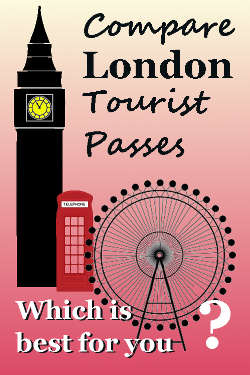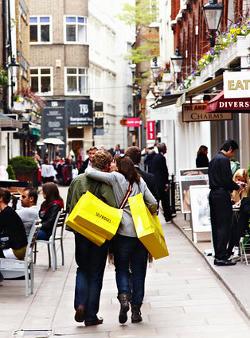

What to see and do in Britain
A thematic guide to heritage attractions in the UK
About-Britain.com
- a thematic guide to Britain
- Site index
- Essential
information
- Accidents and emergencies
- Pounds and pennies
- Hotel search
- Budget tourism - Britain on the cheap
- Online shopping from the UK
- Driving in Britain
- Low-cost car-hire
- Travel by train in Britain
- Visitor accommodation
- Hotels in London
- Britain's main attractions
- Food and eating in Britain
- Christmas in Britain
- English pubs
- Places
to visit
- Britain's main attractions
- Visiting London
- London for free
- Getting round in London
- Shopping in London
- More great English cities
- Oxford and Cambridge
- Tourism by region
- Discover southeast England
- Discover central southern England
- The West of England - Gloucestershire to Dorset
- The Westcountry - Devon and Cornwall
- Sites & heritage in the East of England
- About Scotland
- Attractions by theme
- Issues & institutions
About-Britain.com
- A
discovery of Britain, the country and its life
Tourism in Britain - monuments, areas and other attractions
VERY IMPORTANT. As from April 2025, all visitors from countries not subject to visa requirements (i.e from Western Europe, the USA, etc.) must obtain an Electronic Travel Authorisation (ETA).
This document, (the UK equivalent of the ESTA which is required for
people visiting the USA) must be applied for online before
travelling,is valid for two years, and costs £16. Allow three days for
the application process. See the UK government website
for more details and to apply.
| Themes | Best cities | Villages | Countryside |
| Castles | Coasts | Other attractions |
Hôtels
in main English tourist cities
A great selection at best rates
from Booking.com
Liverpool
Manchester
Bristol
Bath
Stratford
Exeter
Other cities
Britain is a rich country! Rich in heritage, rich in monuments, rich in sights, rich in culture. For nearly a thousand years, since England was conquered in 1066 by William the Conqueror, duke of Normandy, the British Isles have developed largely untouched by the wars that caused so much havoc on the European continent. And even if Britain's historic heritage has been on occasions damaged by internal conflicts and even civil war, the country retains to this day an amazing concentration of historic monuments, ancient cities and castles - not to mention its rural heritage, its largely protected coastline, its old pubs and inns, its museums or other attractions.
Here is a small selection of the most important and most popular tourist sites and attractions in Britain.
► Best heritage cities to visit.
When the Industrial Revolution transformed the country from the 18th century onwards, it largely missed out on the most important cities of the time, to focus around new industrial cities that have since become the country's major cities. Thus, many of the most important historic cities in Britain remained largely untouched by the upheavals of the Industrial age, and remained largely as they were, with their historic centres, old houses , medieval cathedrals and other monuments . Here are some cities worth visiting.While London is the most visited tourist city in the UK, The university cities of Oxford and Cambridge, with their unparalleled concentration of historic monuments, university buildings from the Middle Ages built for kings, princes and other patrons.
The Scottish capital city, Edinburgh, is one of the finest cities in Europe, and its 18th century "New Town" is a UNESCO World Heritage site.
The city of Chester, south of Liverpool, an architectural gem, a concentration of half-timbered buildings, still following the grid plan of the ancient Roman castrum .
The Archbishopric cities of Canterbury and York, with their magnificent medieval cathedrals, which are among the most beautiful in Europe.
Other regional cities such as Exeter, Gloucester, Worcester, Salisbury, Lincoln, Ely, Norwich, Wells or Durham, also with historic centres arranged around a medieval cathedral. See Best English cathedrals .
The spa towns of the 18th century , especially Bath, Cheltenham and Buxton.
Click for visitor information for the biggest cities in England.
► Some old villages and small towns which are remarkably well preserved.
Some examples: Lacock and Castle Combe ( Wiltshire ) Milton Abbas (Dorset) , Rye (Sussex) , Haworth (West Yorkshire )
► Rural heritage - Areas of countryside, with their villages
For area guides, see Tourist regions of Britain
England:
- Around London : See Country walks near London
- Southern Kent - the " Garden of England " in Southeast England
- The Southwest - ancient "Wessex" including Dorset , Somerset , Devon and Cornwall, with their charming thatched cottages and old villages.
- The Cotswolds - Gloucestershire , Oxfordshire - villages in honey-colored stone.
- North Norfolk - See the East of England
- North central England - The highlands of north-central England, the Peak District, the Pennines and the Yorkshire Moors ( Yorkshire Dales )
- The Lake District , in the northwest of England, an area of low mountains and lakes, popular with poets, artists, hikers and mountaineers.
Wales:
- Most of Wales, including central Wales and Snowdonia - rugged hill country and some real mountains. See Wales.
Scotland:
- The Scottish Highlands and Islands - the most sparsely populated and wild part of the British Isles. See ► Scotland
► Castles and Stately homes :
Britain's magnificent medieval castles;
Here are just some
of the best. Leeds Castle ( Kent ) Arundel and Bodiam
(Sussex) , Windsor ( near London) , Berkeley (
Gloucestershire) Alnwick ,
Bamburgh or Durham (Northeast England), Caernarvon, Conway, Harlech and
Carmarthen (in Wales), Edinburgh and Stirling (in Scotland)
Renaissance stately homes;
Among the best are Hever
Castle (Kent) , Sudeley Castle (Gloucestershire )
or Hampton Court ( London area) .
Neoclassical chateaux;
Mansions
or stately homes built or largely rebuilt during the neoclassical
period (17th - 18th centuries ), the most famous of which include
Wilton and Longleat (Wiltshire ) , Blenheim Palace (birthplace of
Winston Churchill, Oxfordshire ) , Harewood House and Castle Howard
(Yorkshire ) or Woburn Abbey (north of London ) .
► Other major sites and monuments , such as:
Stonehenge - (see Prehistoric Britain) very famous prehistoric monument ( Wiltshire )
Britain's
major industrial heritage sites (see
Open air museums) , such as the UNESCO world heritage
sites at Ironbridge Gorge (Shropshire), the birthplace of the
Industrial Revolution, or the earliest factories, located in the
Derwent Valley (Derbyshire) .
► The English coast - protected areas and resorts.
Nearly 10% (over 800 km) of
the coast of England belongs to an association, the National Trust,
founded in 1895. This was the world's first Association set up with the
object of conserving heritage sites and the coastline. In
more than 110 years of existence, it has acquired, through donations or
purchases, a good percentage of the most spectacular , environmentally
sensitive and typical stretches of the English coastline, putting it
out of reach of property developers and speculators. Thus, long
stretches of the English coast are protected from development, and open
to the public for leisure or hiking.
The most popular resorts are on the south coast - from Folkestone to Penzance. The north coast of Cornwall is famous for its great Atlantic beaches.
► More details on England's coasts and seasides and on the coasts of south west England
The most popular resorts are on the south coast - from Folkestone to Penzance. The north coast of Cornwall is famous for its great Atlantic beaches.
► More details on England's coasts and seasides and on the coasts of south west England
► The coasts of Scotland and Wales.
Large parts of these are also
protected. Wales and Scotland having a much lower population density
than England, their coast are less frequented than those closer to the
urban areas of England. Long stretches of coastline in
Scotland are largely deserted.
► Other attractions and miscellaneous sites
Theme parks:
Britain
has a good number of theme parks. The most popular of these are Alton
Towers
(Staffordshire),
Blackpool Pleasure
Beach, Thorpe Park
(Surrey),
Chessington World of Adventure
(Surrey),
and a score of others.
Living museums and heritage sites
►
For living
museums, see Open air museums
Britain has over a hundred heritage railways, most of them running steam trains (see steam heritage railways) . The best known of these are the Bluebell Line (Sussex), The Severn Valley Railway (west of Birmingham), the Worth Valley line (West Yorkshire), the West Somerset line (near Taunton), the Great Central in Leicestershire (the only double-track preserved railway) and more than 80 others ! The English are great lovers of steam trains.
Britain has over a hundred heritage railways, most of them running steam trains (see steam heritage railways) . The best known of these are the Bluebell Line (Sussex), The Severn Valley Railway (west of Birmingham), the Worth Valley line (West Yorkshire), the West Somerset line (near Taunton), the Great Central in Leicestershire (the only double-track preserved railway) and more than 80 others ! The English are great lovers of steam trains.
National parks , heaths and forests.
Most
of these are in the north or far west of England. The most
recent area to be classified as a National Park is the New Forest, in
Hampshire (near Southampton).
Events:
Pageants,
with extras; numerous stately homes put on historic
displays and special events during the summer maonts; these include
falconry, historic cars, jousting, historic reenactments, and
more.

Bodiam Castle

Cambridge - Kings college
► You may also like....
What to see and do in the USA ...
How to plan a trip to the USA ...
A tourist introduction to the USA
What to see and do in the USA ...
How to plan a trip to the USA ...
A tourist introduction to the USA

Offers may include free
delivery

Hiking in the north of England
Photo credits :
© About-Britain.com
 En español.
En español.  En français.
En français. 